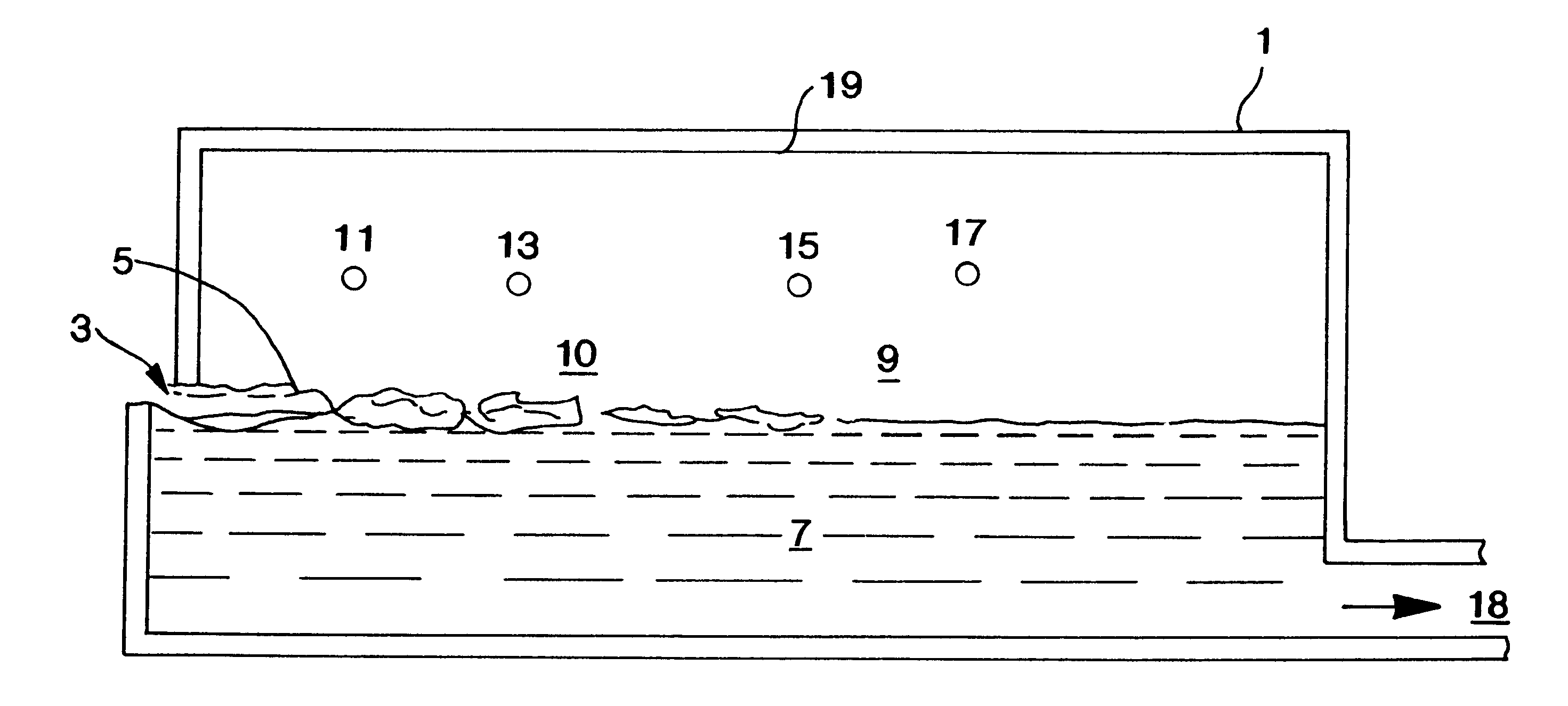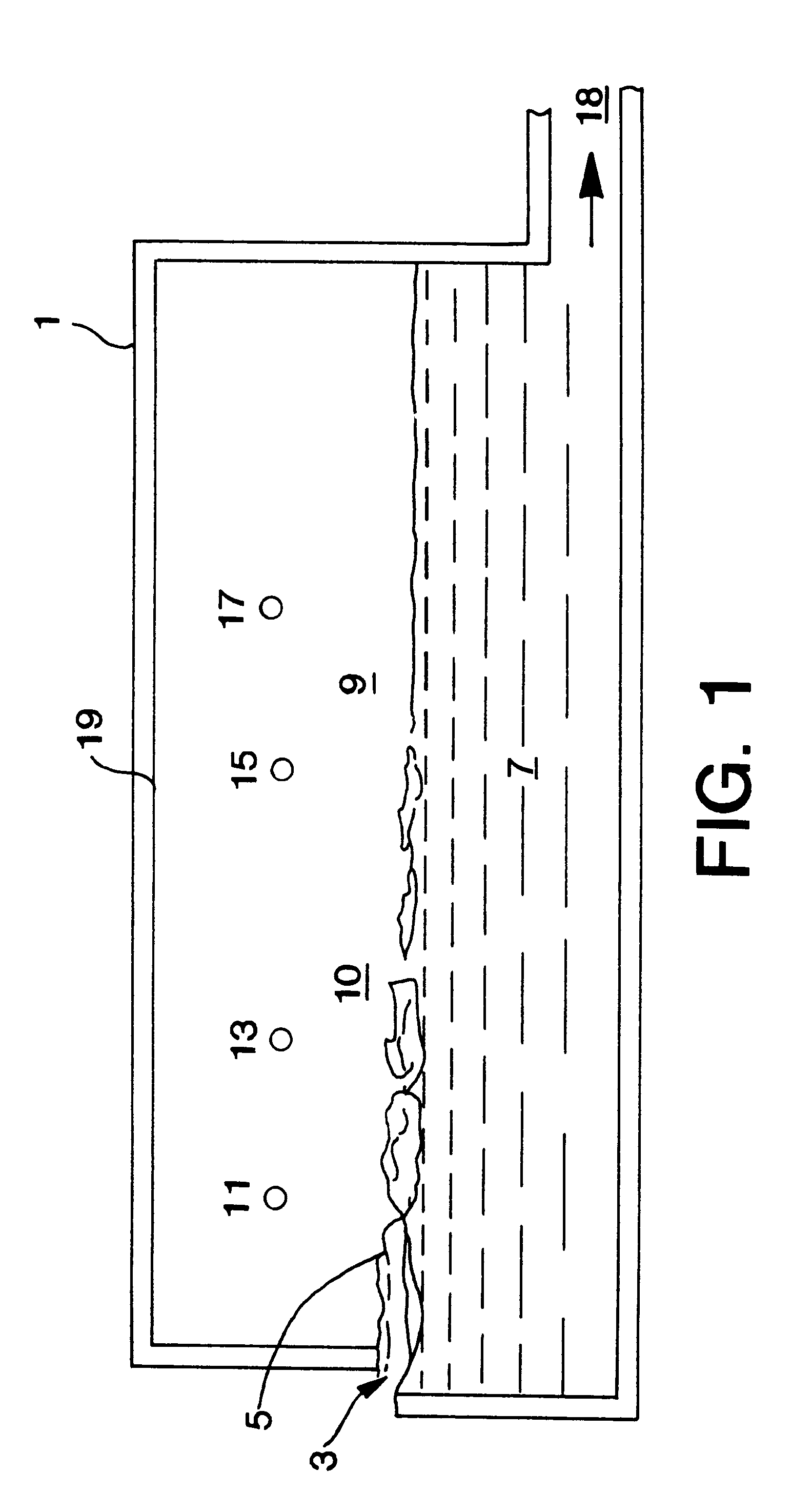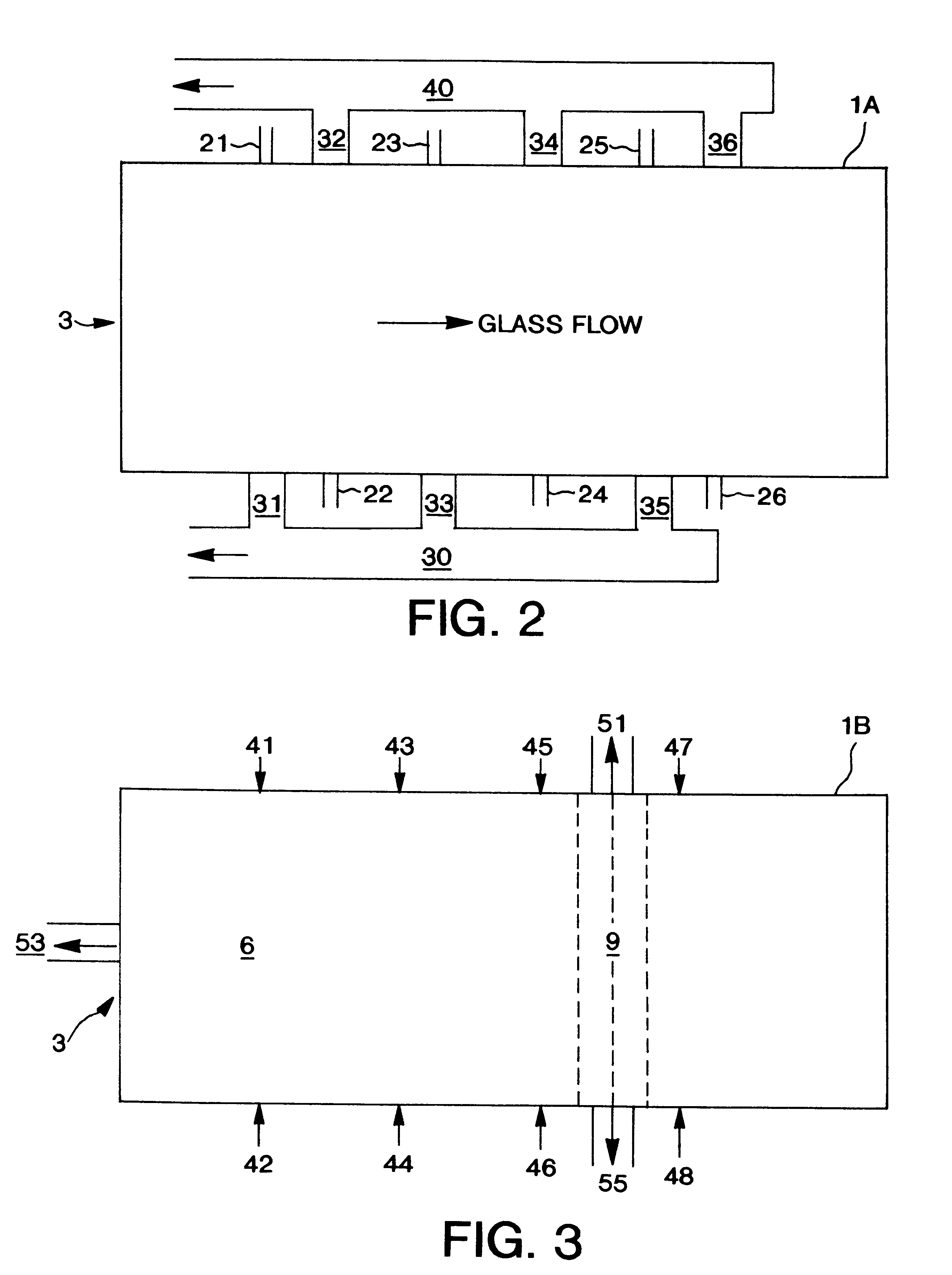Glass melting process and apparatus with reduced emissions and refractory corrosion
a glass melting process and glass melting technology, applied in glass making apparatus, glass furnace apparatus, manufacturing tools, etc., can solve the problems of refractory corrosion, severe loss of silica crown in some glassmelting furnaces, electrostatic precipitators or baghouses, etc., and achieve the effect of reducing the rate of corrosion
- Summary
- Abstract
- Description
- Claims
- Application Information
AI Technical Summary
Benefits of technology
Problems solved by technology
Method used
Image
Examples
case b
shows the simulation of a high crown furnace with 7.5 feet side walls under the same furnace conditions. The peak crown temperature near the fining zone of the furnace is reduced from 2885.degree. F. to 2867.degree. F. by the higher crown. Due to the large wall areas compared to Case A, superstructure wall heat losses increase from 1.80 in Case A to 2.00 MMBtu / hr. A surprising benefit is a reduction of the flue gas temperature from 2784.degree. F. to 2741.degree. F. and the resulting reduction in flue gas sensible heat loss. The net result is that the heat transferred to the glassmelt surface increased from 29.24 to 29.31 MMBru / hr in spite of the higher wall heat losses. When the furnace crown is higher, the radiative heat exchange between the fining area (i.e., the hottest zone) and batch charge area becomes greater. As a result, the crown temperature of the charge area tends to increase. Although higher crown temperature near the flue area is normally associated with higher flue g...
case c
shows the simulation of a high crown furnace with higher burner elevation of 1.9 ft above the glassmelt surface. All other conditions are the same as those of Case A and B. The peak crown temperature near the fining zone of the furnace in this case is 2876.degree. F. which is higher than that of Case B by 9.degree. F. due to the higher burner elevation, but lower than that of Case A by 9.degree. F., due to the higher crown, in spite of higher burner elevation. Due to the large wall areas compared to Case A, superstructure wall heat losses increase from 1.80 in Case A to 2.01 MMBtu / hr in this Case. A benefit is a reduction of the flue gas temperature from 2784.degree. F. to 2766.degree. F. and the resulting reduction in flue gas sensible heat loss. The net result is that the heat transferred to the glassmelt surface decreased only slightly from 29.24 to 29.31 MMBru / hr in spite of the higher wall heat losses. A large reduction in particulate emissions from 13.53 lb / hr in Case B to 8.0...
PUM
| Property | Measurement | Unit |
|---|---|---|
| height | aaaaa | aaaaa |
| height | aaaaa | aaaaa |
| height | aaaaa | aaaaa |
Abstract
Description
Claims
Application Information
 Login to View More
Login to View More - R&D
- Intellectual Property
- Life Sciences
- Materials
- Tech Scout
- Unparalleled Data Quality
- Higher Quality Content
- 60% Fewer Hallucinations
Browse by: Latest US Patents, China's latest patents, Technical Efficacy Thesaurus, Application Domain, Technology Topic, Popular Technical Reports.
© 2025 PatSnap. All rights reserved.Legal|Privacy policy|Modern Slavery Act Transparency Statement|Sitemap|About US| Contact US: help@patsnap.com



